Tube Rocket Development

January 22, 2011 notes by Ben Brockert:
Tube Rocket
Last year we started work on a new vehicle planform, which we're calling the tube rocket. From our perspective it is a Supermod whose 36 inch spherical tanks have been replaced by 15 inch cylindrical tanks with a common bulkhead. Otherwise it is quite similar to our other vehicles; low pressure LOX/alcohol as propellant, regulated helium pressurization, the same type of engine as a Mod, the same engine gimbal and roll vane for guidance and control, and the same computer box and plumbing schematic.
From an external perspective, it's looks like a fairly large liquid fueled sounding rocket. We're using a dual parachute deployment system that would be familiar to anyone in advanced high power rocketry (HPR), adjusted for a rocket that goes rather higher and is quite a bit heavier than most HPR.
We're still definitely working toward a fully reusable VTVL human-carrying vehicle, and the tube rocket acts as a risk reduction step in that direction.
Having flown a variety of different vehicles and variations on the mod scheme, we have ground operations worked out quite well. But we haven't yet had the experience of putting a rocket in the space environment, which the tube rocket will see. Ensuring that we can get our electronics functioning well while the rocket is in vacuum is an important consideration for all future vehicles.
The tube rocket also gives us new experience with extended high acceleration and its opposite, full microgravity. As far as we call tell, all of our systems will function fine in both, but you do experiments like this to find out what you don't know.
It will also be an opportunity to test long range communications. Just keeping a data connection between two objects that move from 0km apart to 150 and back to 0 with Doppler shifts is a challenge for which most off the shelf radio data hardware is not equipped. We'd like to continue operating with commercially available hardware that doesn't require special FCC licensing, and we'll be running two radios for the first flight. Inevitably people are going to want to webcast their spaceflight.
In the currently regulatory regime there is a significant gradation between a "class 3" vehicle that flies with less than 200,000 pound-seconds of impulse, under 150km, and unmanned, vs. one that exceeds that quantity of impulse, altitude, or is manned. Vehicles in the lower echelon can be operated under a waiver, whereas ones above require a launch license. The waiver is at least four times faster and easier to get than the license. That encourages us to learn as much as we can with a waivered vehicle before making the step up.
System maturation justifications aside, the tube rocket will be quite capable as a sounding rocket. The native payload size is 15" diameter by a variable length, as much as a few feet. and it could be rebuilt to be wider. The rocket will provide really good microgravity, better than what you can get on a manned rocket. Unlike most current sounding rockets, we'll be recovering the vehicle for reuse, which also means return of experiments.
The first rocket will be carrying primarily cameras as payload, as well as an amateur radio experiment. I hope to get four or five different views of the flight from onboard video, and have been trying out new camera models to make that possible. After the first flight we'll be first flying payloads for existing partners and customers, and proceeding from there.
The first tube rocket is named Stig, after the driver character from the British auto show Top Gear. They've launched a three-wheeled car as a "space shuttle" with big hybrid engines and a Mini off a ski ramp with rockets, so it seems appropriate that Stig finally makes it closer to space.
Our first flight has only the goal to exceed 100,000 feet (30.5km), but given the number of firsts there's a good chance something will go wrong. We have parts on hand to build two tube rockets, and the second one always comes together faster than the first. It's important to plan for failure.
We'll be launching and recovering the rocket at Spaceport America in New Mexico early this year. We'll cover the event as much as is possible given the remote location.
|
 Dummy is 5' 8" tall
Dummy is 5' 8" tall
|
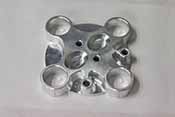
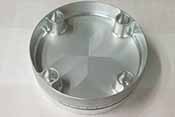

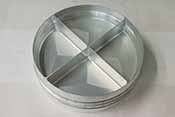
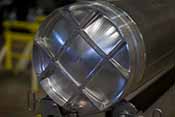
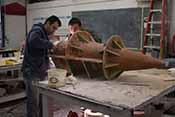
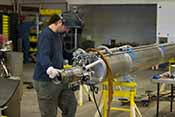
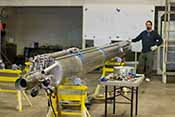
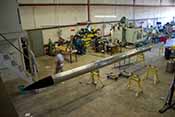
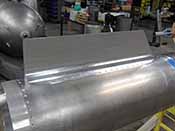
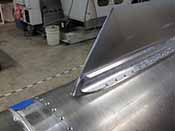
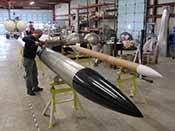
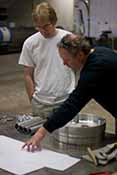
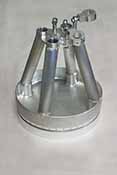
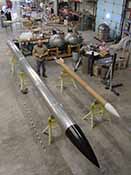
Rick Homans
Regarding Spaceport America, good luck to Rick Homans and the board of SA in their future endeavors. It's been interesting to see the spaceport coming together; Neil was out for a visit just last fall. We look forward to working with the new director when the new governor fills the position.
Ralph Hall
Also congratulations to Representative Ralph Hall, the new chairman of the House Committee on Science, Space, and Technology. Rep. Hall is our local representative, and we were happy to have him and his staff visit the Armadillo facilities in late August.
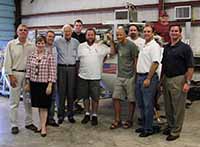
|